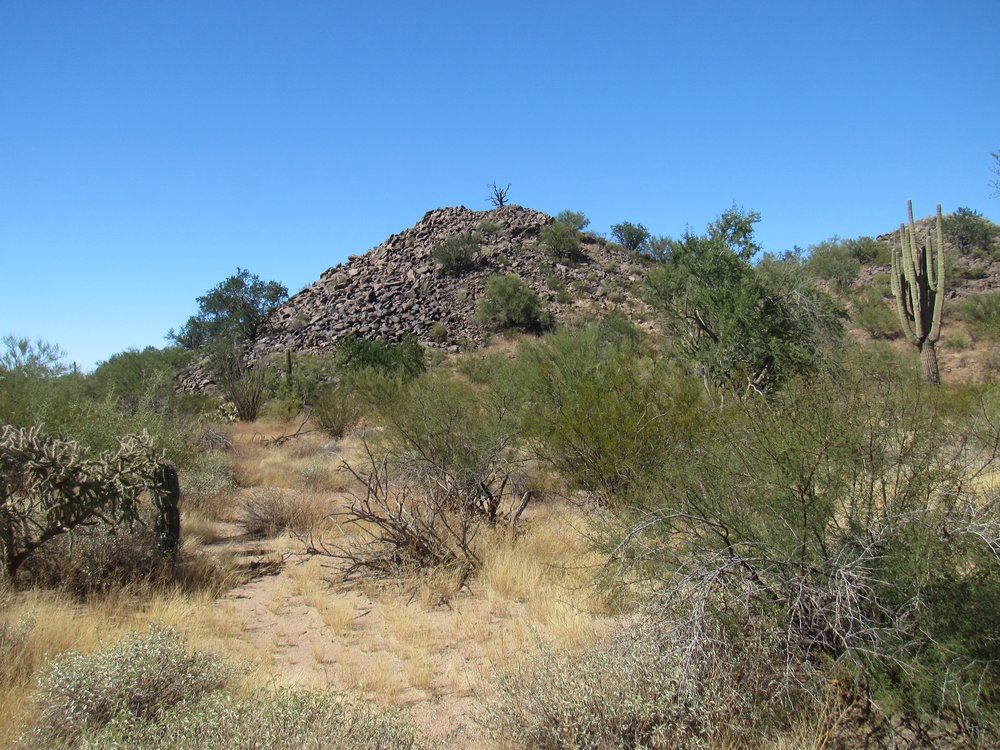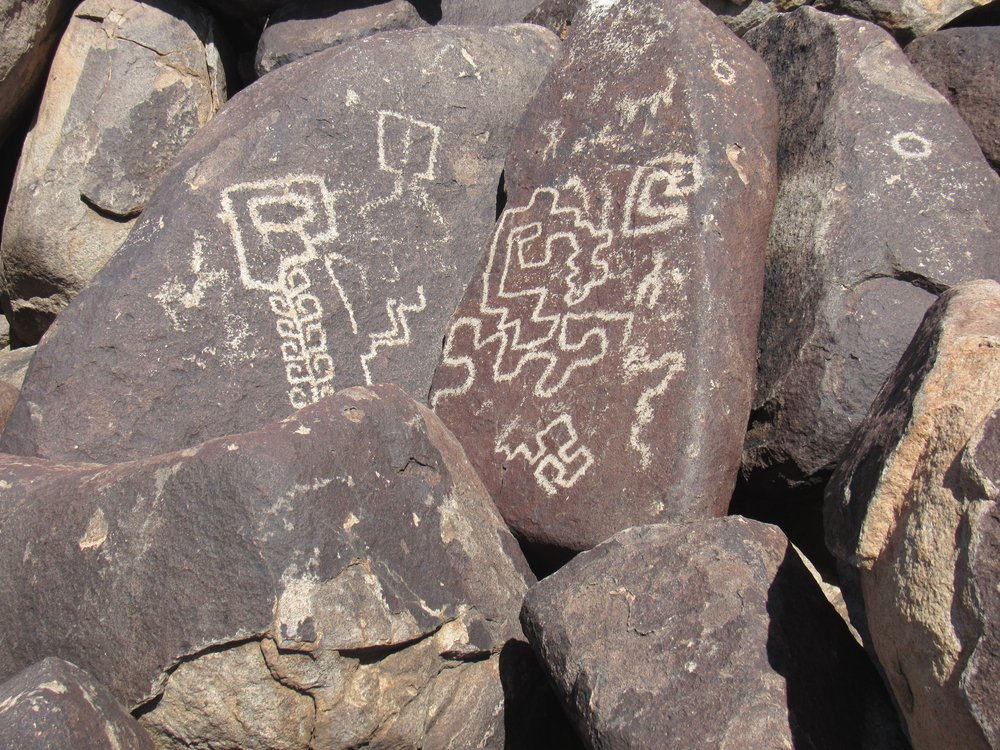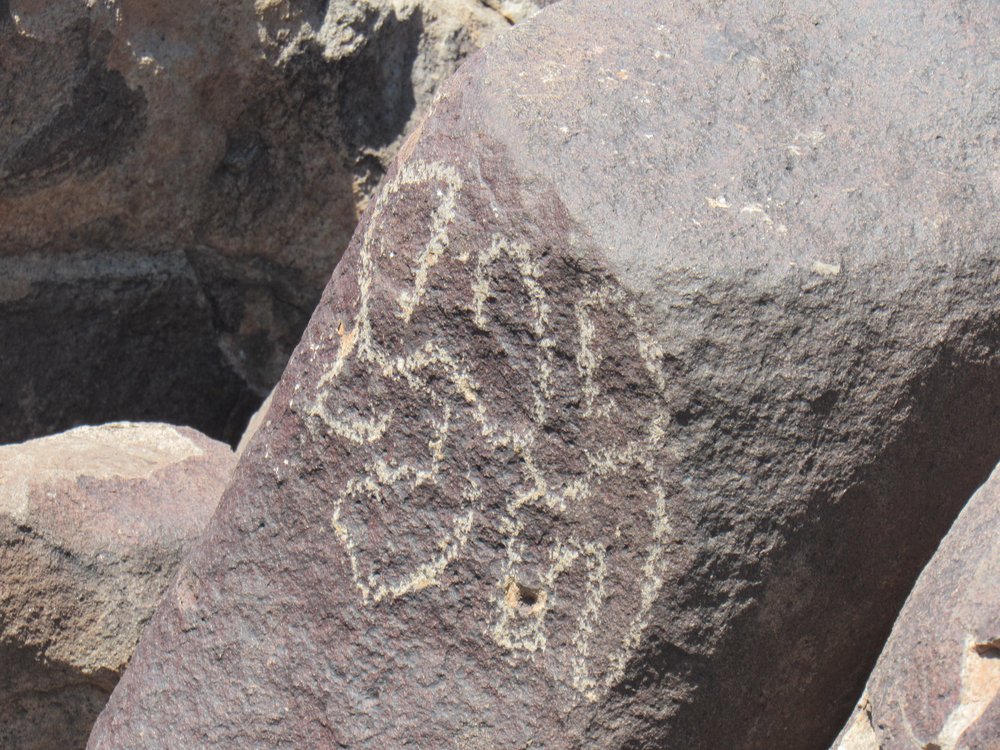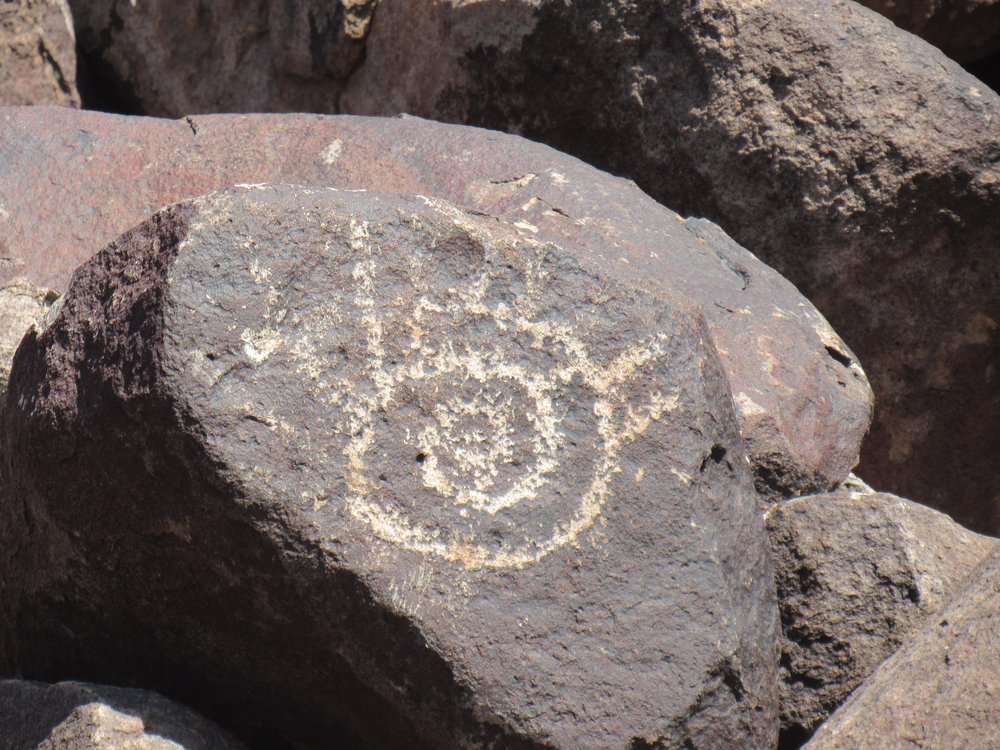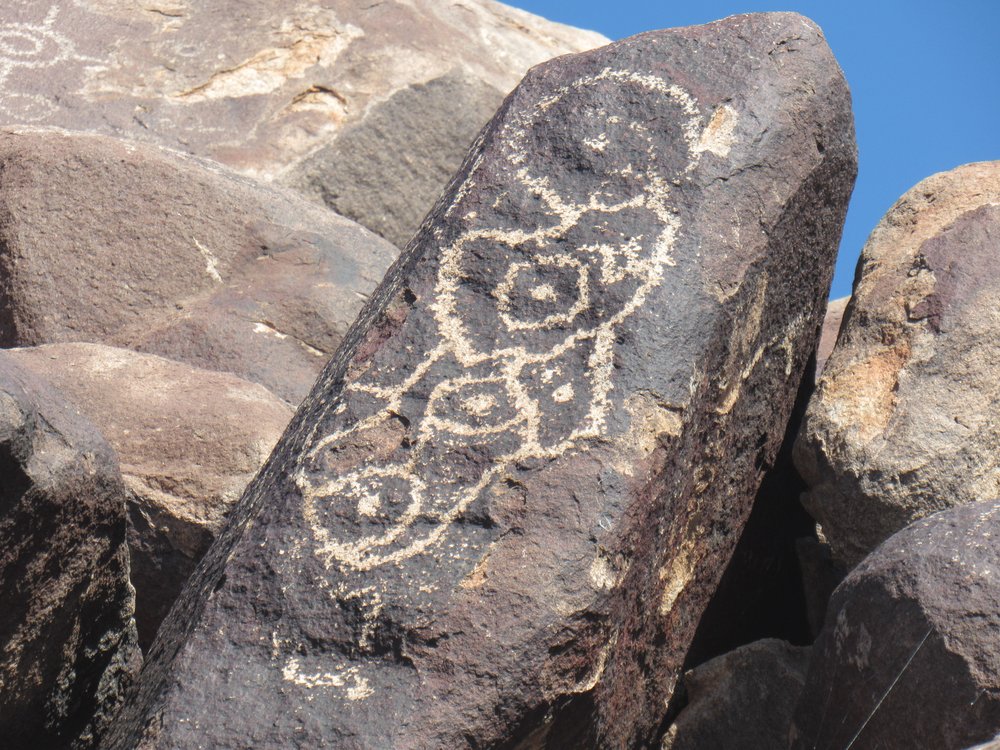A petroglyph is an image created by removing part of a rock surface by incising, picking, carving or abrading, as a form of rock art. Petroglyphs are found world-wide and are often associated with prehistoric peoples.
The above came straight from Wickipedia, and I think it’s a pretty good description. Here in the desert southwest of the United States can be found literally thousands of petroglyph sites, and there are plenty of them within a few miles of my home. I love visiting them because every site is different and has so much to see.
Recently, climber friend Jake suggested we go and visit a petroglyph site within an hour’s drive out in our local desert. He had been there before and felt I’d enjoy it too, so away we went. We entered the Ironwood Forest National Monument, drove a few easy miles and parked. It was a half-mile walk to a small hill and, Bob’s your uncle, we were there. I mean it when I say a small hill, because it only rose about 115 feet above the surrounding desert, or about the same as climbing up the stairs of a 12-story building. This place lent itself perfectly to petroglyphs – the hill was little more than a huge pile of dark boulders, weathered with a sort of desert varnish. If you were to scrape away the black coating, you’d expose a light-colored layer beneath, thereby creating any image you wished. Here’s the hill.
As soon as we approached the foot of the hill, I could spot the drawings even before we got there. They were everywhere, from the bottom all the way to the top. I guess my main objective here was to share the photos with you, so that’s what I’ll do, in no particular order.
These drawings were all different sizes, some as small as 2 or 3 inches and some as large as 24 inches.
Most of these sites I’ve visited have been out in the open, often up on a hill, where they are easily seen by anyone passing by.
This place is wide open for anyone to come and visit. There are no locked gates, and virtually no restrictions of any kind. I didn’t see any evidence of anyone’s having defaced the rocks, so that’s a good thing. The location is also pretty well-known.
At the base of the hill was this marker, telling people to take care with the petroglyphs. You can zoom in to read it better.
It was tiring work clambering up and down those boulders, and by the time we were done I was all tuckered out.
I know we didn’t see everything that there was to see, but these pictures show about 110 different images. I’m sure that there were at least as many more lurking in the rocks.

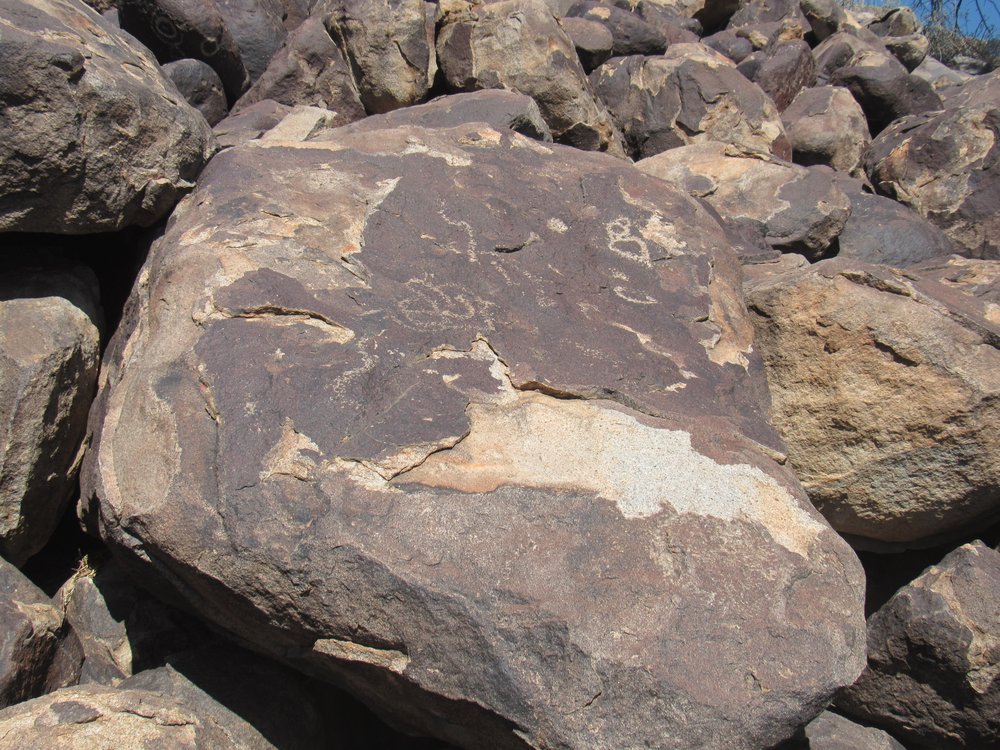

 I learned that many of these petroglyphs had been dated to around the year 300 AD. Only half a mile away, on a piece of private land occupied by an old historic ranch dating from the 1860s, was a much larger group of ancient drawings. A team of archaeologists had recently spent a few months there studying an immense group of over 10,000 petroglyphs on a rocky hillside within plain sight of the ranch house.
I learned that many of these petroglyphs had been dated to around the year 300 AD. Only half a mile away, on a piece of private land occupied by an old historic ranch dating from the 1860s, was a much larger group of ancient drawings. A team of archaeologists had recently spent a few months there studying an immense group of over 10,000 petroglyphs on a rocky hillside within plain sight of the ranch house.
It’s always a privilege to visit sites like this, and I am grateful that Jake introduced me to this one.

